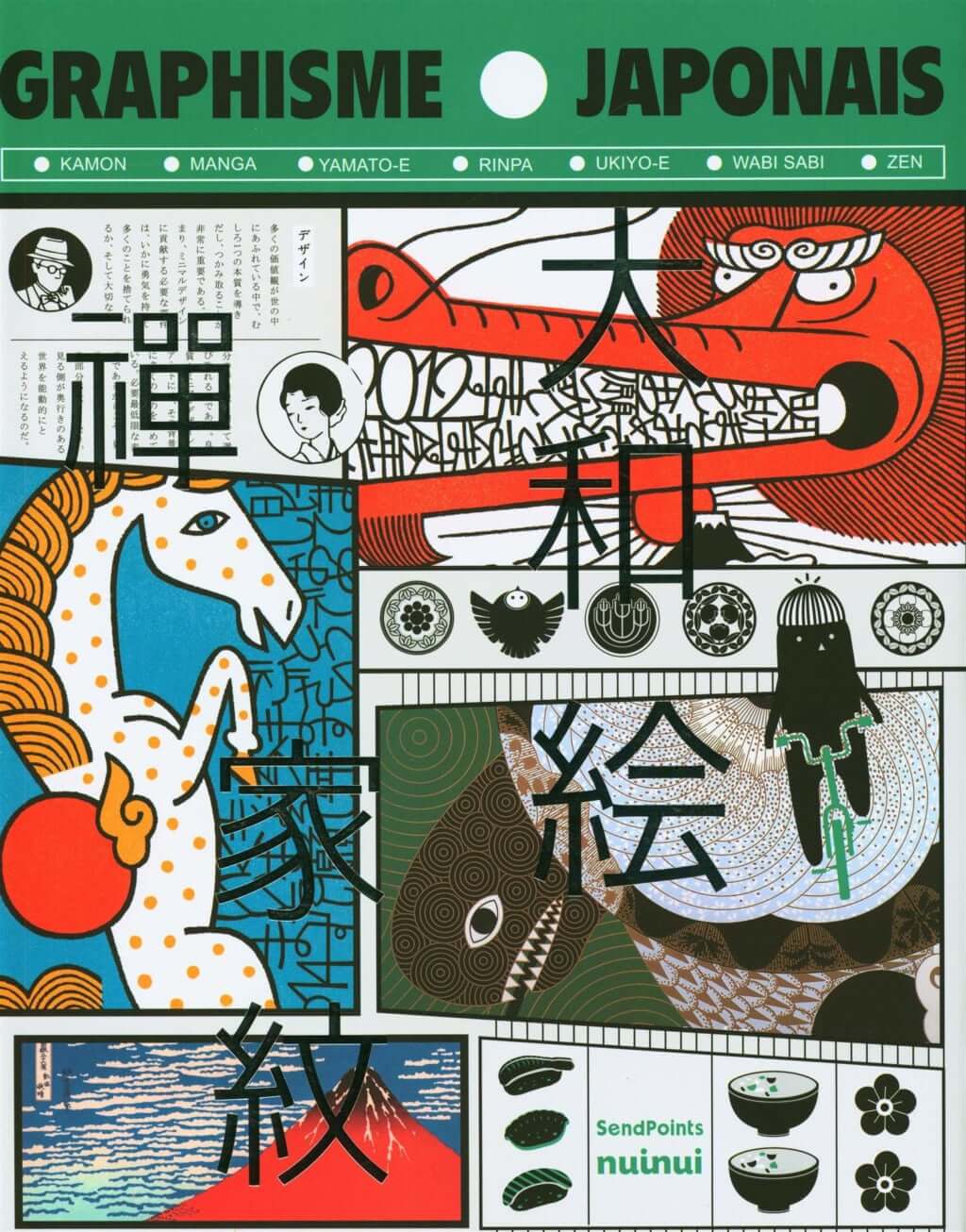Japanese Graphic Design from A to Z
This book retraces the history of graphic design from 1945 to 2020, examining the influences for the leading names in the discipline.

© SendPoints - Nuinui éditions
Who are the masters of graphic design in Japan? What were their inspirations? How did they make a mark on their era and future generations? Graphisme Japonais (‘Japanese Graphic Design’), a book by Marie Kastner, offers answers to all these questions through brilliant analyses, studies, and interviews.
Graphisme Japonais is divided into three parts. The first is dedicated to post-war graphic design from 1945 to 1980, the second examines the golden age of Japanese graphic design in the 1990s, which coincided with the bursting of the economic bubble, and the third analyses 21st-century trends in the discipline.
Rooted in the traditional Japanese aesthetic
From Masaaki Hiromura, the graphic designer responsible for the corporate identity of Seibu shopping centres and the logo for the 2020 Olympic Games, to Daigo Daikoku, who has designed language textbooks used in primary schools and who oversees the artistic direction of MUJI’s global Christmas campaigns, Marie Kastner presents the big names in Japanese graphic design but also analyses their sources of inspiration.
Thus, the reader discovers that the wabi-sabi aesthetic, the artistic universe of yamato-e and ukiyo-e prints, and even the philosophy behind the tea ceremony are never too far from Japanese graphic design creations, even the most modern.
Graphisme japonais (‘Japanese Graphic Design’) (2020), a book by Marie Kastner, is published by Nui Nui (not currently available in English).
TRENDING
-
A Rare Japanese Garden Hidden Within Honen-in Temple in Kyoto
Visible only twice a year, ‘Empty River’, designed by landscape architect Marc Peter Keane, evokes the carbon cycle.

-
Colour Photos of Yakuza Tattoos from the Meiji Period
19th-century photographs have captured the usually hidden tattoos that covered the bodies of the members of Japanese organised crime gangs.

-
Recipe for Ichiraku Ramen from ‘Naruto’ by Danielle Baghernejad
Taken from the popular manga with the character of the same name who loves ramen, this dish is named after the hero's favourite restaurant.

-
Modernology, Kon Wajiro's Science of Everyday Observation
Makeup, beard shape, organisation of cupboards and meeting places: all of these details decipher 1920s Tokyoites.

-
Hitachi Park Offers a Colourful, Floral Breath of Air All Year Round
Only two hours from Tokyo, this park with thousands of flowers is worth visiting several times a year to appreciate all its different types.





